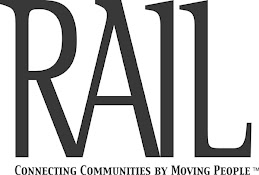Last week, the U.S. House of Representatives – led by Rep. Bill Shuster (Pa.), Chair of the House Transportation & Infrastructure (T&I) Committee – introduced legislation to reauthorize the nation's passenger rail legislation. The full House referred the measure – known as the Passenger Rail Reform and Investment Act of 2014 – to the T&I Committee for markup, scheduled for tomorrow.
Although the bill outlines a four-year authorization period for investment in the operation of Amtrak's national network and capital projects for the Northeast Corridor, those annual investment levels are well below Amtrak's requested funding levels. And while a number of key elements – ranging from restoration of Amtrak service between Florida and the Gulf Coast to allowing domesticated pets onboard trains – could ultimately benefit the nation's passenger rail network, it falls short of the sort of comprehensive investment befitting a mode of travel that has carried record number of riders for 10 of the last 11 years and can shape local and regional economies like few others.
The co-sponsors of Shuster's bill are significant, given that they represent both the strongest advocates and opponents of federal passenger rail programs in the House: California Rep. Jeff Denham – an outspoken critic of Amtrak and the California's High-Speed Rail (HSR) project – joins Shuster from the Republican majority, while Shuster's Democratic counterpart – West Virginia's Rep. Nick Rahall – joins frequent and vocal passenger rail proponent Rep. Corrine Brown of Florida. The combination of those four key representatives suggests the measure could enjoy strong bipartisan support in the House – no small achievement given the body's current gridlock and one that speaks to Shuster's perceived role as a moderate on the issue.
The most recently-passed version of the legislation – the Passenger Rail Investment and Improvement Act of 2008 – expired on September 30, 2013, and is considered a reasonable and stable source of federal investment for Amtrak and intercity rail across the nation. That it was approved by a Congress controlled by the Democrats at the time and signed by President George W. Bush demonstrates recent precedent for bipartisan agreement on passenger rail authorizations.
Our allies at the National Association of Railroad Passengers (NARP) recently released an assessment of the bill here.
RAIL Magazine's assessment of the bill's provisions are similar, although not identical.
As NARP outlines, the measure does include a number of valuable reforms to contribute to more efficient, responsive operations by Amtrak, including:
- A comprehensive, ongoing approach to upgrading the Northeast Corridor (NEC) – defined in the legislation as the rail line owned and operated by Amtrak between Boston, Mass., and Washington, D.C. – to the tune of a $14 billion loan to Amtrak over the bill's four-year authorization period along with a $300 million grant requiring corresponding matching investment from the states served by the NEC [for our thoughts on the NEC, see our post here];
- An effort to restore intercity rail service between Florida and New Orleans that was suspended after Hurricane Katrina in 2005, but never restored;
- Studying and developing recommendations for rail-oriented development around Amtrak stations, as well as opportunities for Amtrak to leverages its assets by allowing private sector entities to install utility infrastructure such as power transmission, telecommunications systems and other activities, thereby generating ancillary revenue to support its operations;
- Creating a Route Advisory Committee for state-supported routes to ensure their viability and investigate opportunities by which operators other than Amtrak may be contracted with to operate the service – a nod to efforts in Indiana and Oklahoma to explore contracts with service providers other than Amtrak. This provision includes fairly strong protections to avoid abandonment of service at all costs;
- Allowing Amtrak passengers to travel with domesticated animals, such as cats and dogs;
- Evaluating the railroad's boarding procedures in comparison to best practices within the rail transport industry; and
- Reform of Amtrak's food and beverage program. Although Amtrak's food and beverage operations are a small-minded bugaboo of Amtrak opponents in Congress, the program's continual – and significant – operating losses distract the Congress from properly investing in the railroad's capital and operating needs. By introducing some measures to direct Amtrak towards a more sustainable food and beverage operation, perhaps some hostile opposition can be reduced by political opponents the next time Amtrak requires decisions on overall operating support. While RAIL Magazine supports the continuation of the kind of hospitality that's unique to passenger rail passengers among other modes of travel (see our post here on the charm of dining aboard a train), this program has become too easy a target to avoid some reform measures.
- The overall investment levels for both operation of the national route network and capital investment in the NEC top out at just under $1.5 billion in the final year of the bill, fiscal year 2018. Amtrak's budget request in those same categories for fiscal year 2015 is $1.62 billion. Although Amtrak's record ridership in recent years have made its operations more efficient via greater revenues, its capital needs have grown. The authorization levels proposed in PRRIA barely keep pace with inflation;
- A total lack of capital investment beyond the NEC. While it's true that the overwhelming majority of the rail miles owned by Amtrak directly are contained within the NEC, routes across the country have benefited from capital investment supported by the current PRIIA of 2008, which established a series of capital grants across the nation. This legislation profoundly constrains Amtrak's ability to grow ridership on its state-supported corridors and long-distance routes;
- Tightening on the screws on potential high-speed rail projects. Although some analysis of this proposed legislation argued it prohibits HSR investments outside the NEC, that's not quite the case. What the bill does do is place tighter checks and approvals required for Amtrak to either purchase new rolling stock for procurements in excess of $1 million [Sec. 24318, (f)] or to advance capital projects in excess of $1 billion [Sec. 304, Large Capital Projects]. While not referencing HSR projects directly, those would likely be only types of projects that would be subject to this heightened litmus test
Ultimately, we agree in large part with NARP that the PRRIA does not substantially improve investment levels or regulatory benefits for the long-term betterment of the nation's passenger rail network. The lack of a substantial re-imagining of federal passenger rail investment is likely driven by strong opposition to federal spending – in general, or for Amtrak and HSR, in particular – large majorities in the House of Representatives. In many cases, House members oppose any ongoing support for Amtrak, so Shuster's ability to draw co-sponsors from both sides of the aisle might be the absolute best this iteration of the Congress can achieve. As a result, the PRRIA – as underwhelming as it is – may be the most plausible mechanism for a predictable level of support for Amtrak, while advocates can hope that alternative mechanisms emerge in coming years to make a more significant investment in the nation's passenger rail network.





